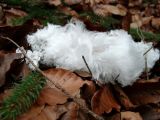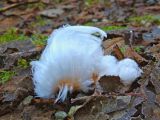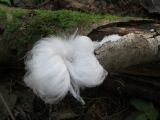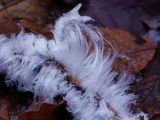We'll go out on a limb here and assume you've never heard of hair ice before. That's OK, few people have. Now, if you're thinking hair ice is what happens when you go swimming in winter and your locks freeze atop your head, you couldn't be more wrong.
Hair ice is proper ice, you see. Ice that has taken the shape of perfectly defined and oddly silky hairs, to be more precise. In fact, it kind of looks like cotton candy. Have a look at the photos in the gallery below to see for yourselves.
Hair ice needs specific weather conditions to form
Such nature-engineered locks made of ice were first documented by German researcher Alfred Wegener back in 1918. Nearly a century later, a study authored by scientists with the European Geosciences Union and published in the journal Biogeosciences explains the weather conditions that cause it to form.
According to this study, hair ice grows on rotten tree branches during nights when temperatures drop just below freezing and the air is saturated with humidity.
Researchers say that it all begins with the freezing of liquid water near the surface of rotten tree branches. When forming, this layer of ice isolates a thin water film in between itself and the wood pores under it. From then on, intermolecular forces push water atop the ice layer, adding to it and making it grow.
“Suction resulting from repelling intermolecular forces acting at this 'wood-water-ice sandwich' then gets the water inside the wood pores to move towards the ice front, where it freezes and adds to the existing ice,” say scientist Christian Mätzler with the University of Bern in Switzerland and colleagues.
“Since the freezing front is situated at the mouth of the wood rays, the shape of the growing ice is determined by the wood rays at their mouth,” they add.
Hair ice needs help from a fungus to form and grow
A chemical analysis of hair ice samples collected between the years 2012 and 2014 in forested areas in western Germany revealed it to contain traces of lignin and tannin, both complex organic compounds known to be metabolic products of a fungus species dubbed Exidiopsis effusa.
Besides, it appears that hair ice only forms on branches that are home to Exidiopsis effusa colonies. Hence, scientists propose that this fungus supports the formation of hair ice by seeding it with compounds that prevent the formation of large crystals and only allow hair-like structures to form.
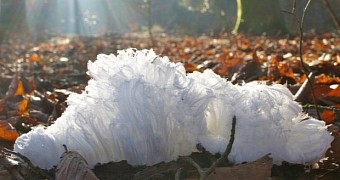
 14 DAY TRIAL //
14 DAY TRIAL // 
